WORDS • SAM TAGGART | PHOTOS • ROB ASELTINE, unless otherwise noted
Outside the yurt, a bonfire burned tall. 15-foot flames melted a hole in the snowpack, giving a fiery glow that flickered against each of the five yurts at Whisper Ridge, a heli- and cat-skiing operation based out of Eden, Utah. The full moon cast enough light just beyond the glowing pit to produce long, deep blue shadows of trees against the silvery, glowing snow. It was a clear night—the forecast for skiing the next day told of sunshine and spring conditions—and faint stars hung overhead while Cory, one of the guides, donning braided pigtails, a well-worn tucker hat and a gritty smile, strummed a song on the guitar about his hometown in Tennesse.
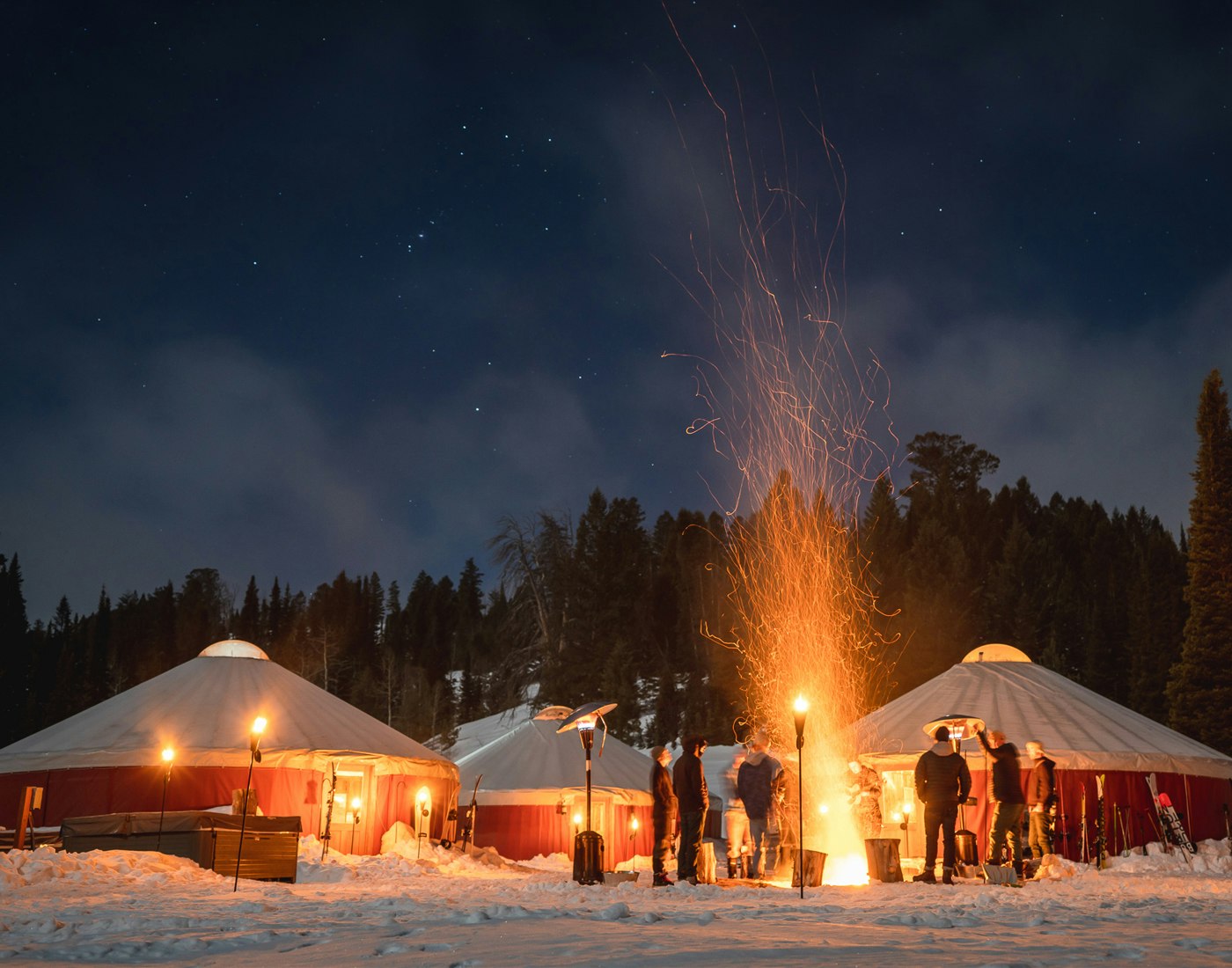
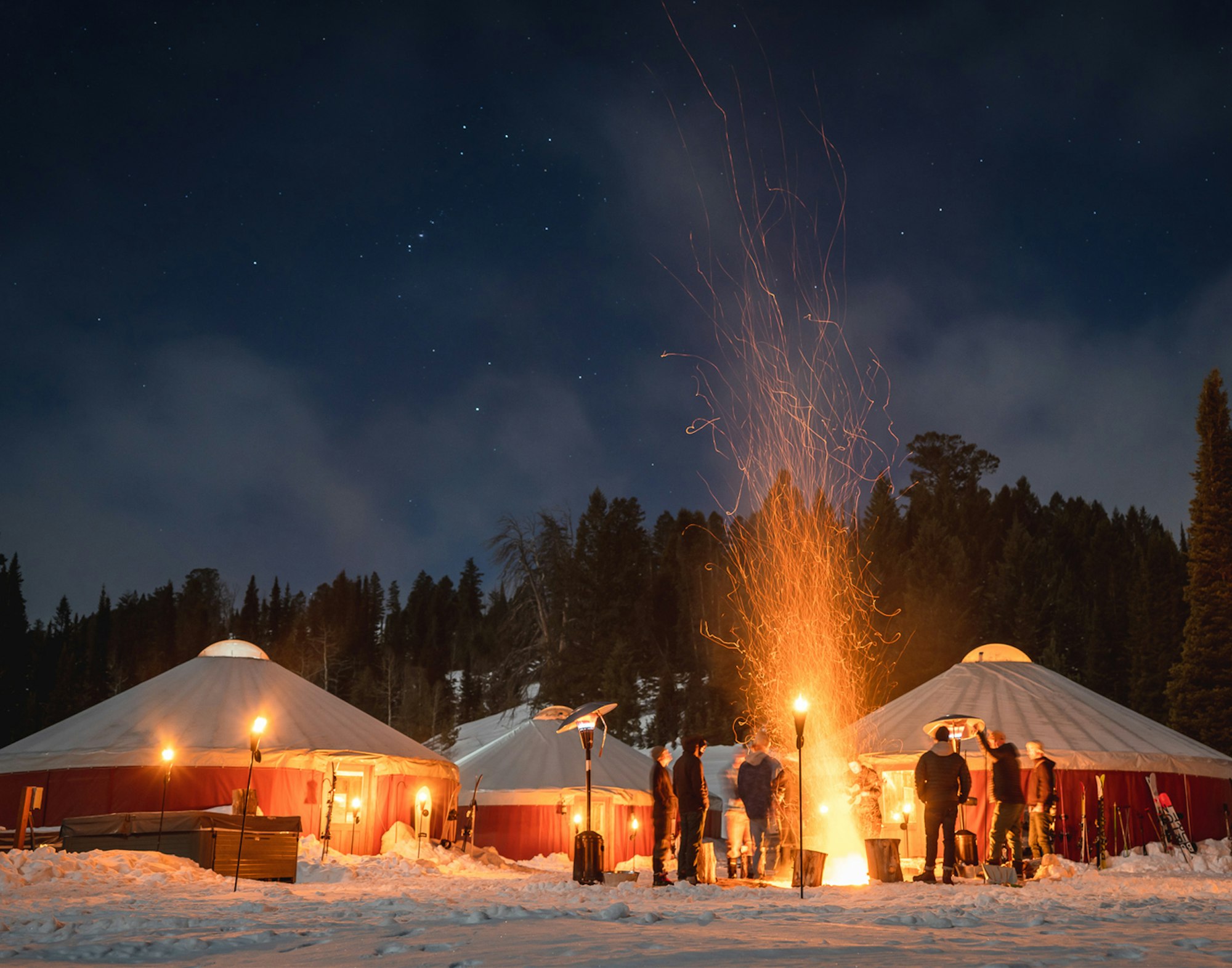
The yurt village at Whisper Ridge.
Giro Sport Design brought us together: It was media folks, like myself, longtime retail buyers—some of the company’s most trusted clients, brand directors, product engineers, designers and Giro athletes, who converged in Utah for the launch of the brand’s newest backcountry-focused helmet and goggle. The plan was simple: to learn about the product from the people who designed it and test it “off the grid” within the expansive tenure at Whisper Ridge. Easy enough. And there was a chance we’d ride in the operation’s helicopter, too.
We arrived in the yurt village on Monday evening via two Pisten Bully snowcats, badass machines that are as nimble as they are powerful, enjoyed the sunset with a beer in-hand before sitting down inside the main yurt for a conversation mediated by Travis Tomczak, Giro’s Brand Manager. This was our chance to get the scoop on the all-new Grid helmet—for ladies, the Envi—and Contour goggle.
Product manager, Zach Leader, spoke of the helmet’s specs and story. Senior Director of Marketing, Dain Zaffke, noted how unique the testing facility is that Giro has at its disposal—the same one formerly used by Riddell, maker of NFL-quality football helmets and Easton, manufacturer of baseball and hockey headgear. Industrial engineer, Tommy Prewitt, spoke next, turning the presentation toward the design process; exactly how Giro conjures up its ideas and how it manifests those drawings, through a painstaking process, into wearable product. Finally, Graphic Designer, Tyler Grobowsky, took the helm to discuss his experiences overseas visiting Morocco, China and countries across Europe to gain inspiration; his trips directly influenced the color palette and the many desgins of the Giro’s future equipment, as well as the many different designs Giro implements across its helmets, goggles and sunglasses.
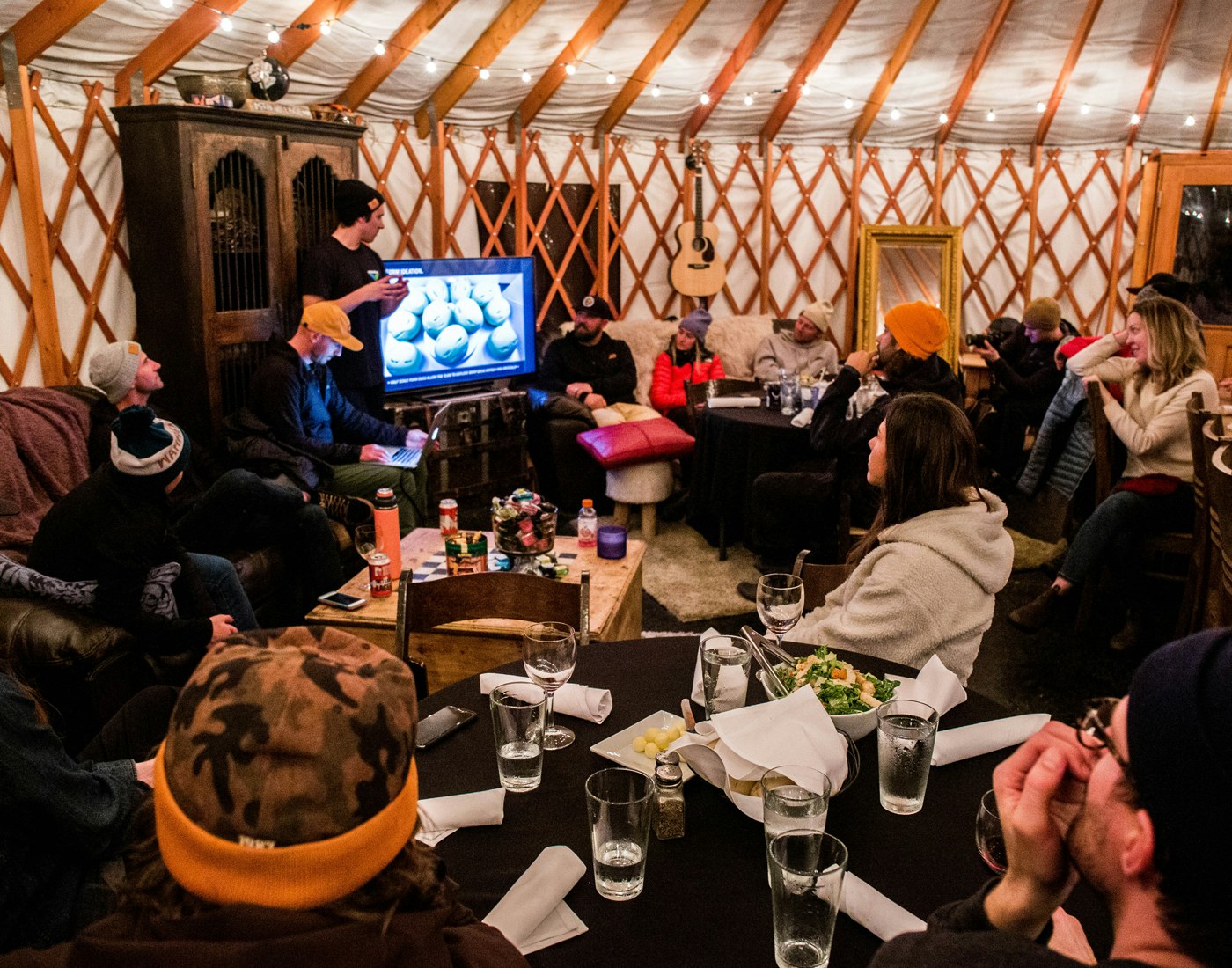
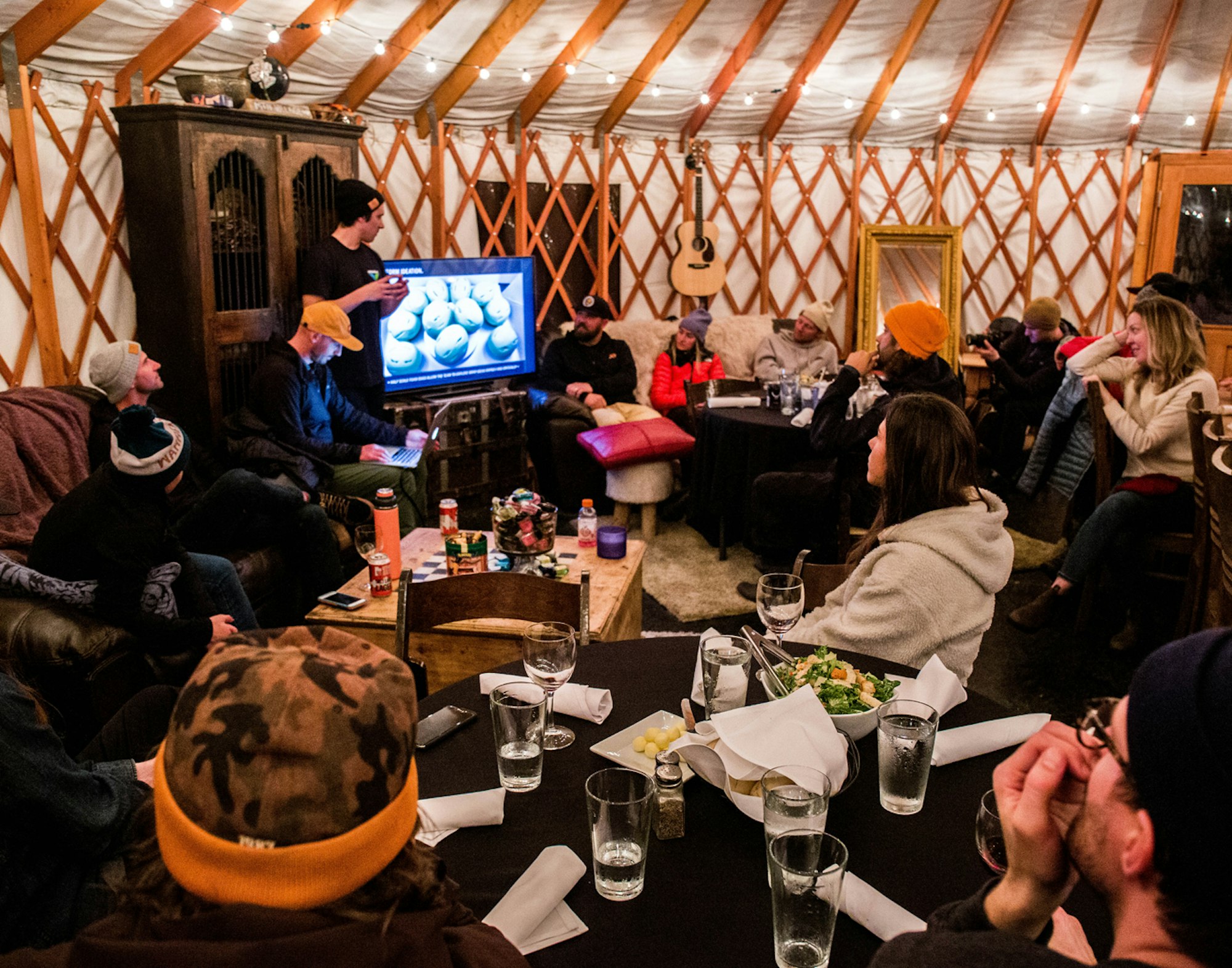
An inside look at the product spotlight on Monday evening. | PHOTO: Sam Taggart
Smoke smoldered in the firepit when we awoke the next morning—our first day of cat-skiing. Hot coffee, waffles with whipped cream, potatoes and eggs were served for breakfast. I stuffed a Ziploc bag with maple bacon while the snowcat drivers warmed up the engines to our machines. Whisper Ridge offers over 70,000 acres of skiable terrain, including what’s accessed via helicopter, and we’d explore just a small chunk of it while testing the all-new combination of Giro helmets and goggles.
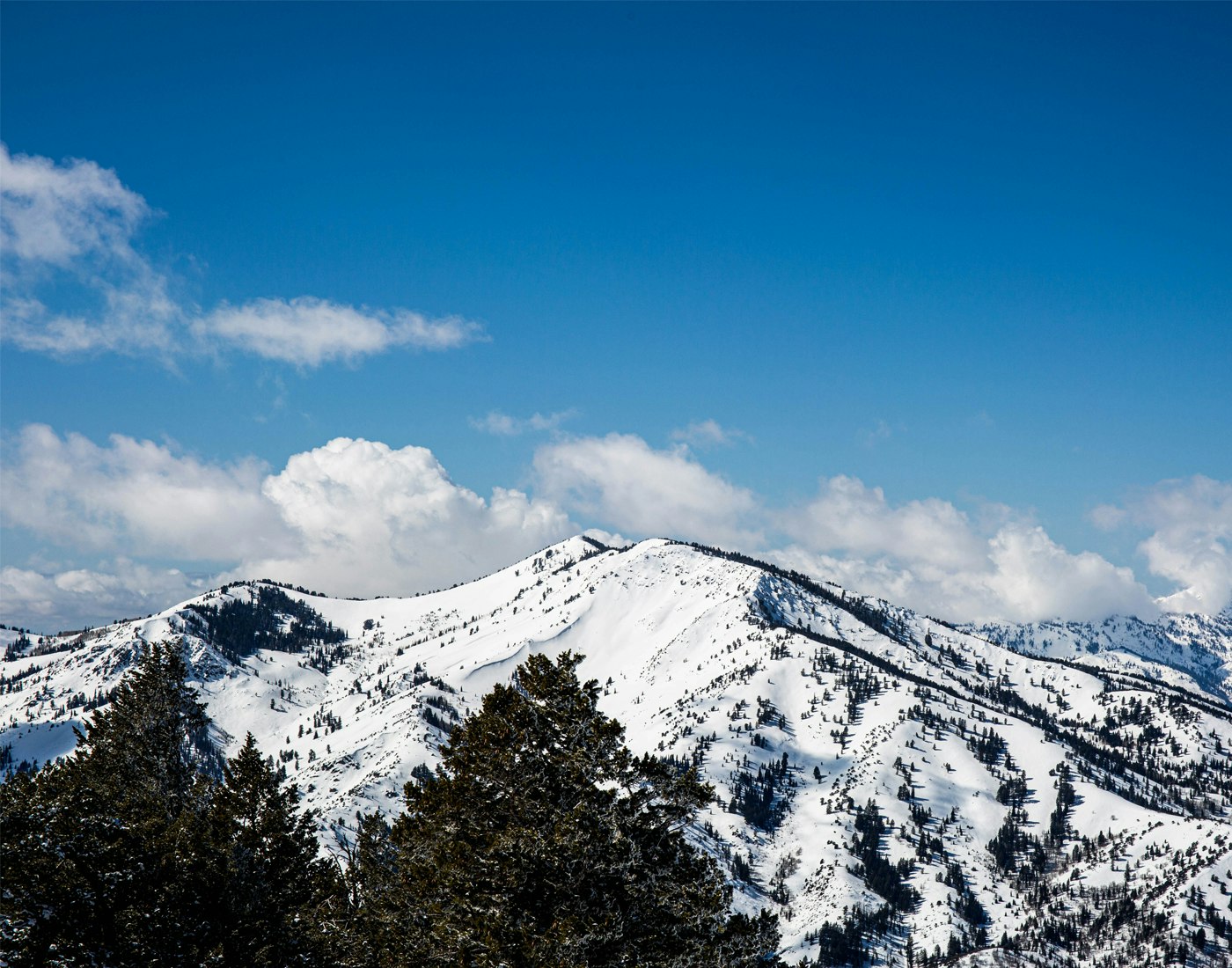
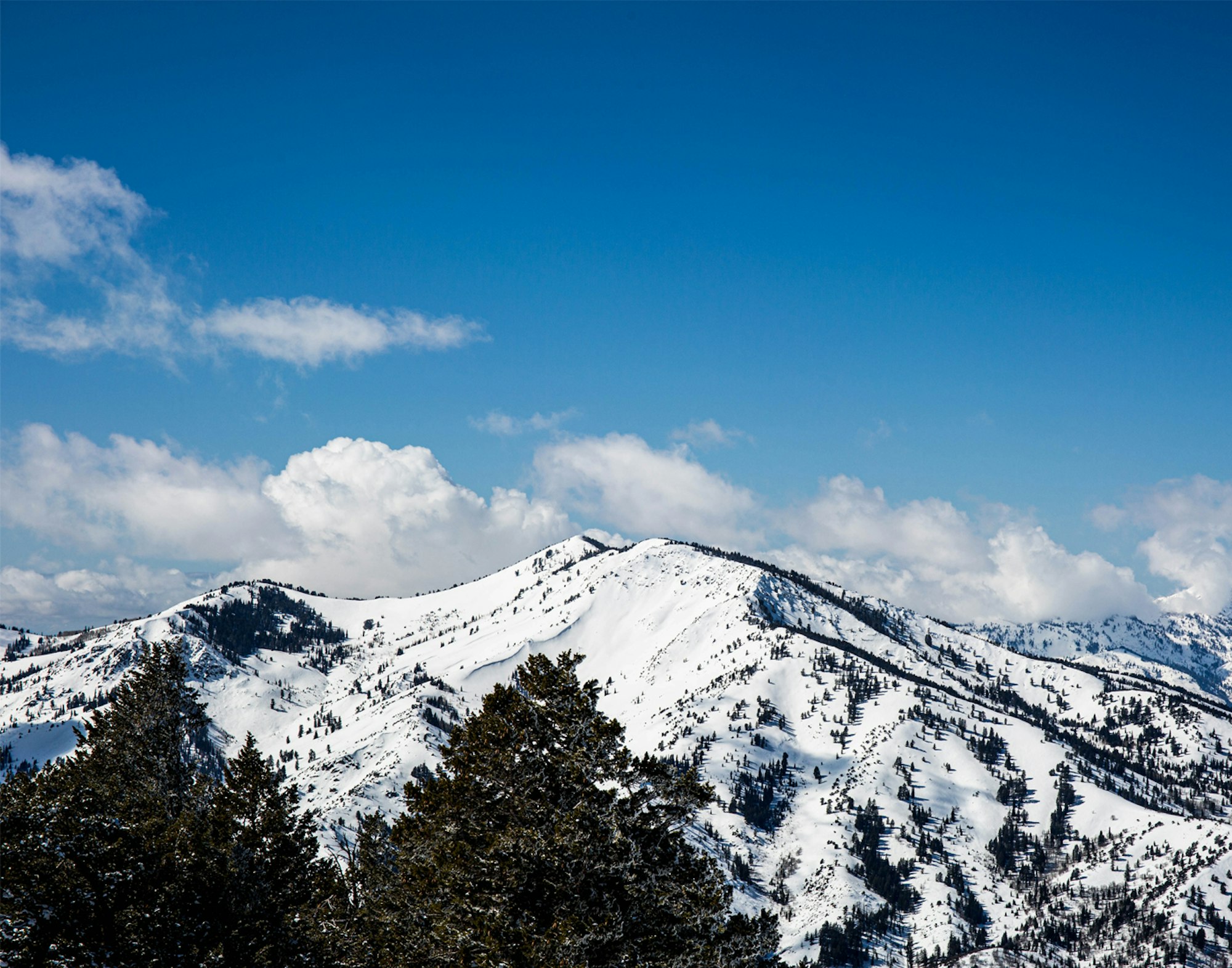
Views of the Wasatch Range. | PHOTO: Sam Taggart
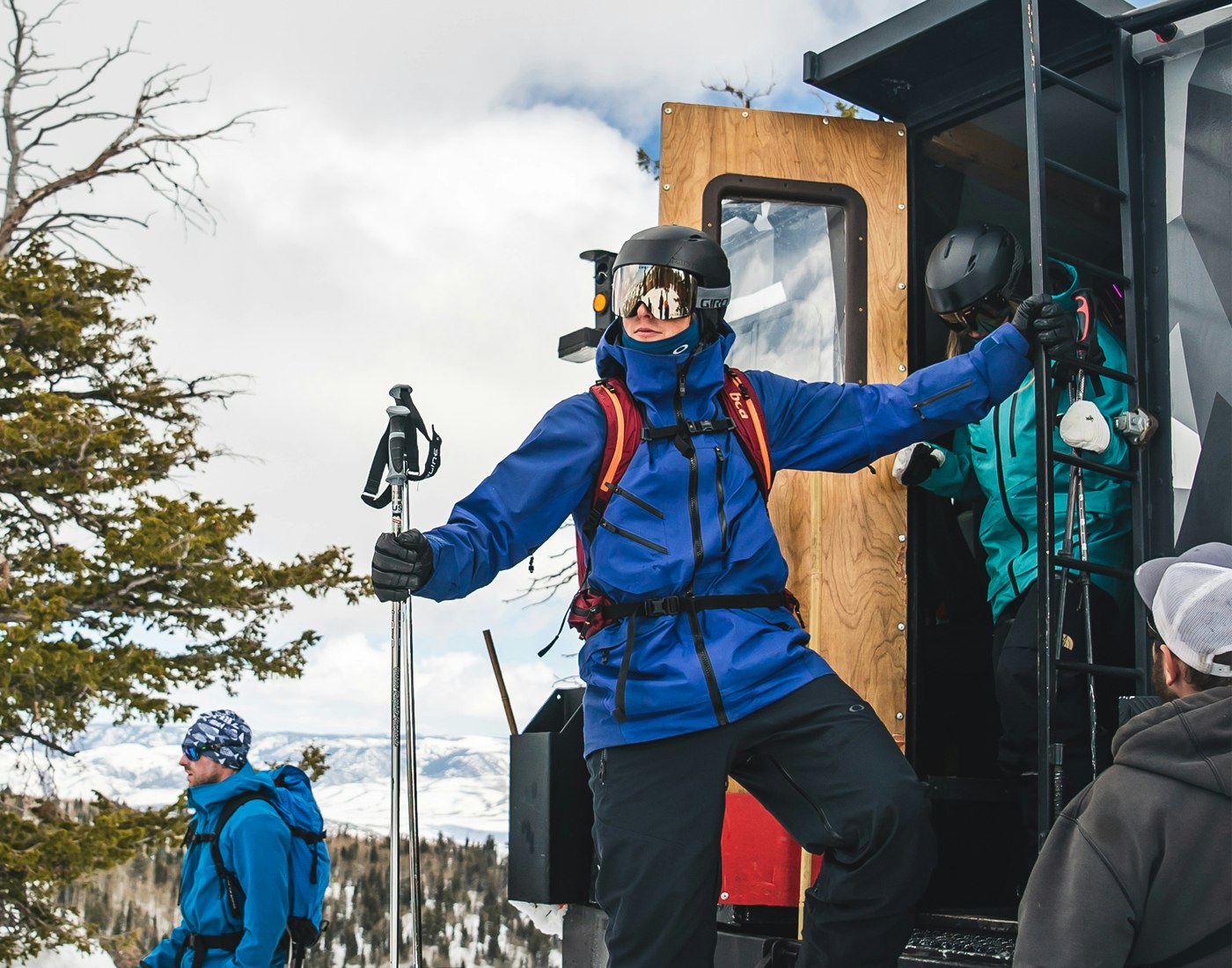
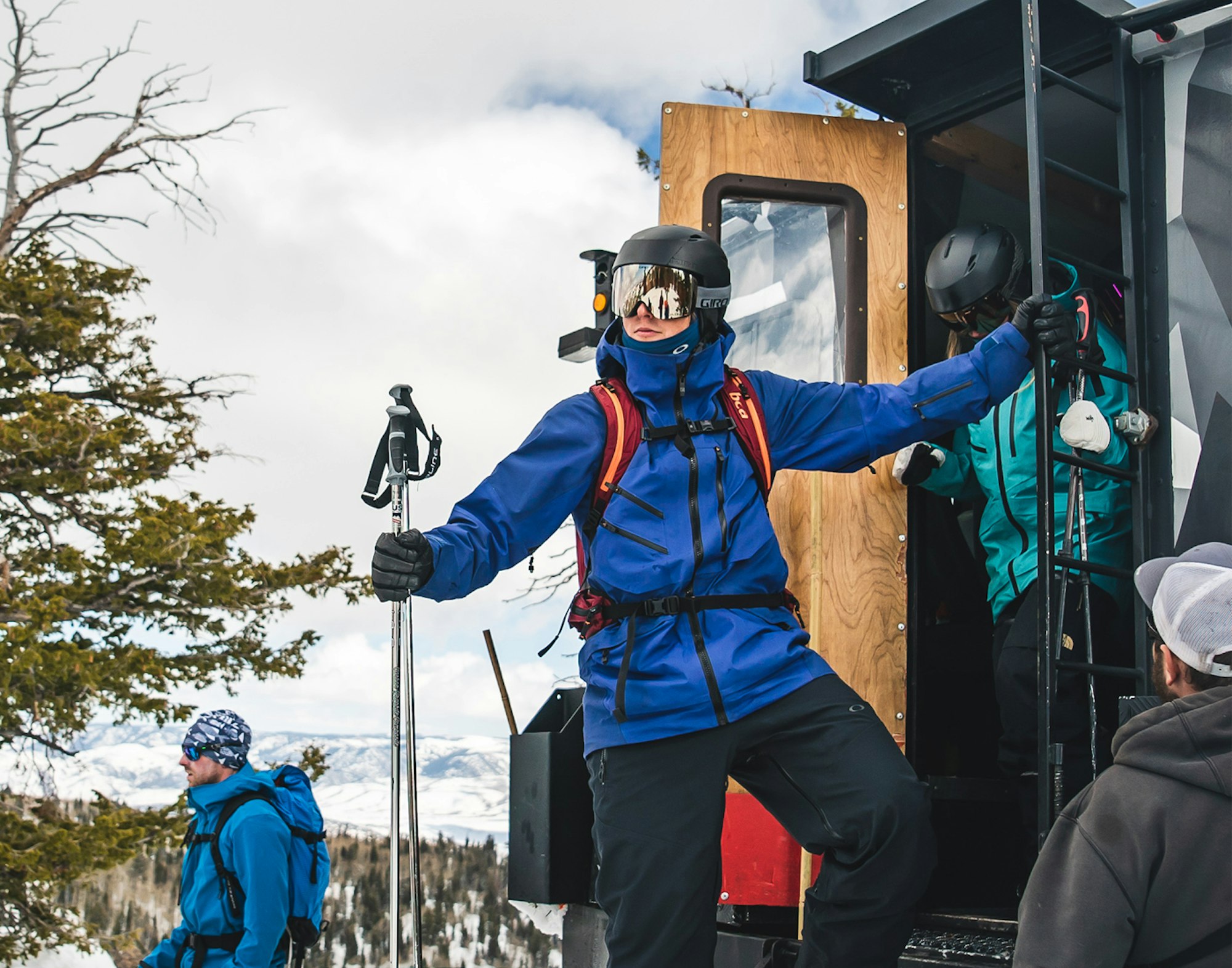
Rocking the new Giro Grid helmet and Contour goggle.
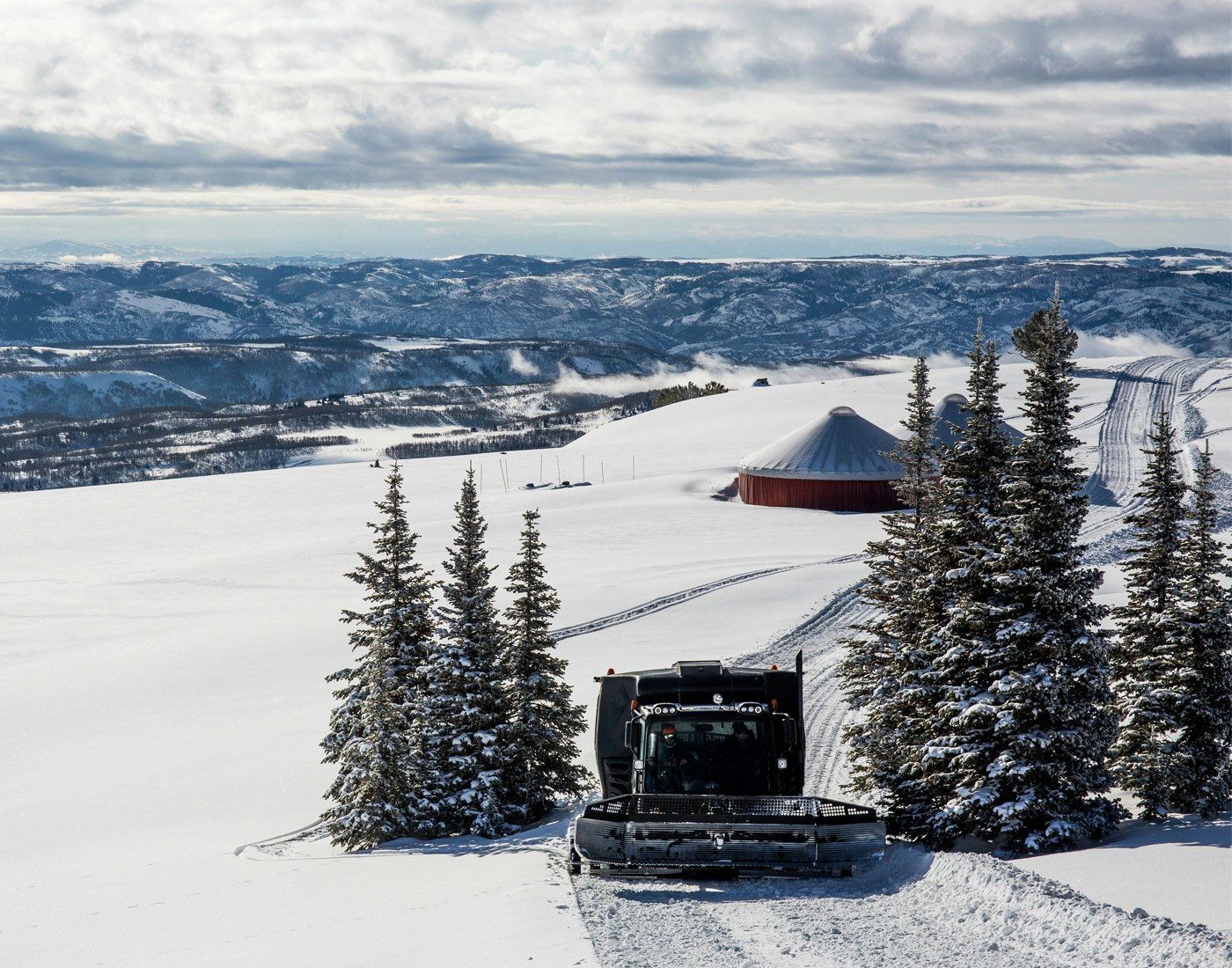
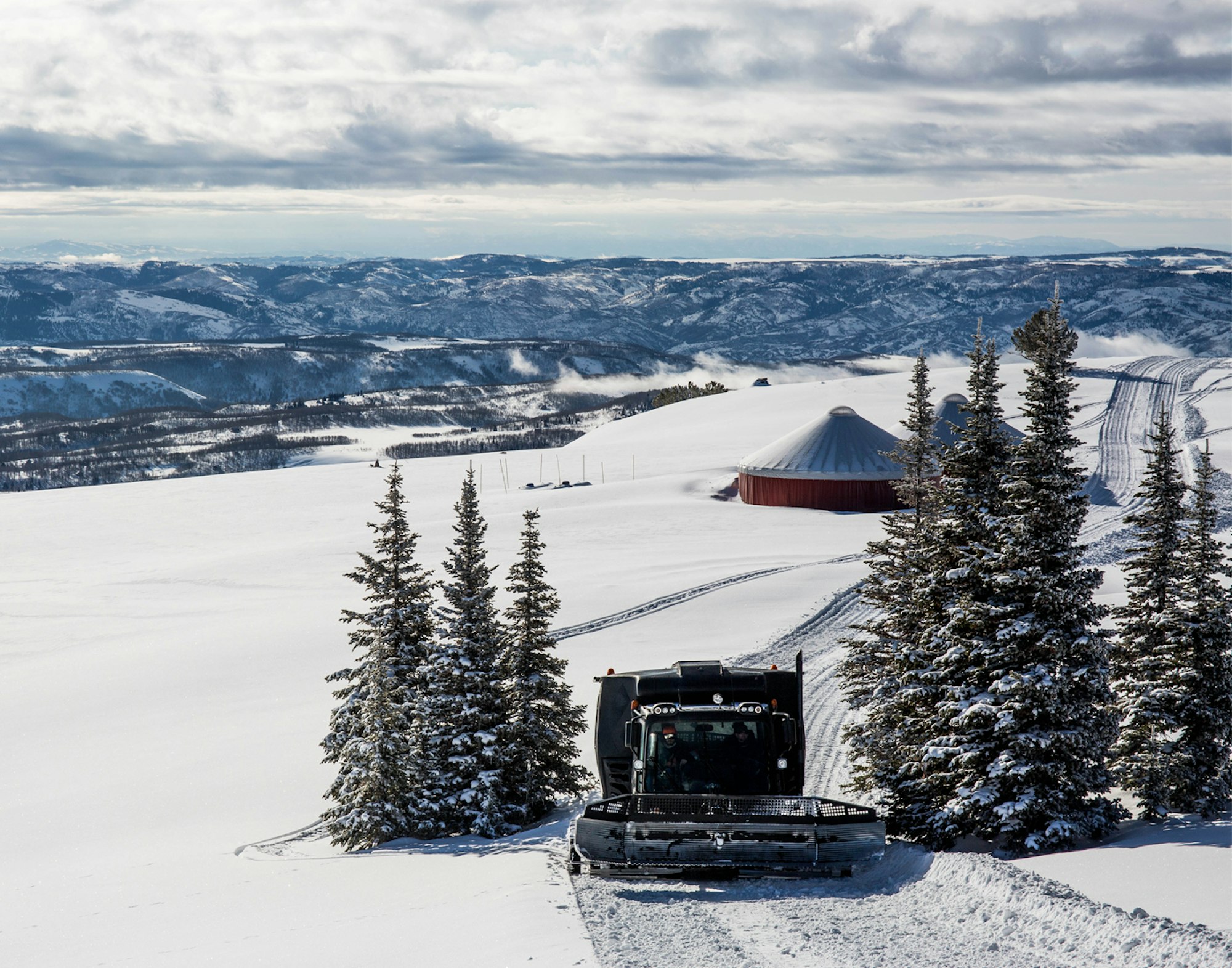
One of Whisper Ridge’s snowcats making the trek uphill. | PHOTO: Sam Taggart
The day was marked with short shots through the trees with a handful of creamy rollovers and natural terrain features. We skied hot pow all afternoon and the helicopter buzzed overhead while guides on snowmobiles followed alongside our snowcats, eager to make the most of the late season conditions. Utah experienced record-setting snowfall in December and January; February and March were less snow-drenched. Yet, our guides knew exactly which nooks and crannies still maintained the best snowpack—70,000 acres never seemed smaller.
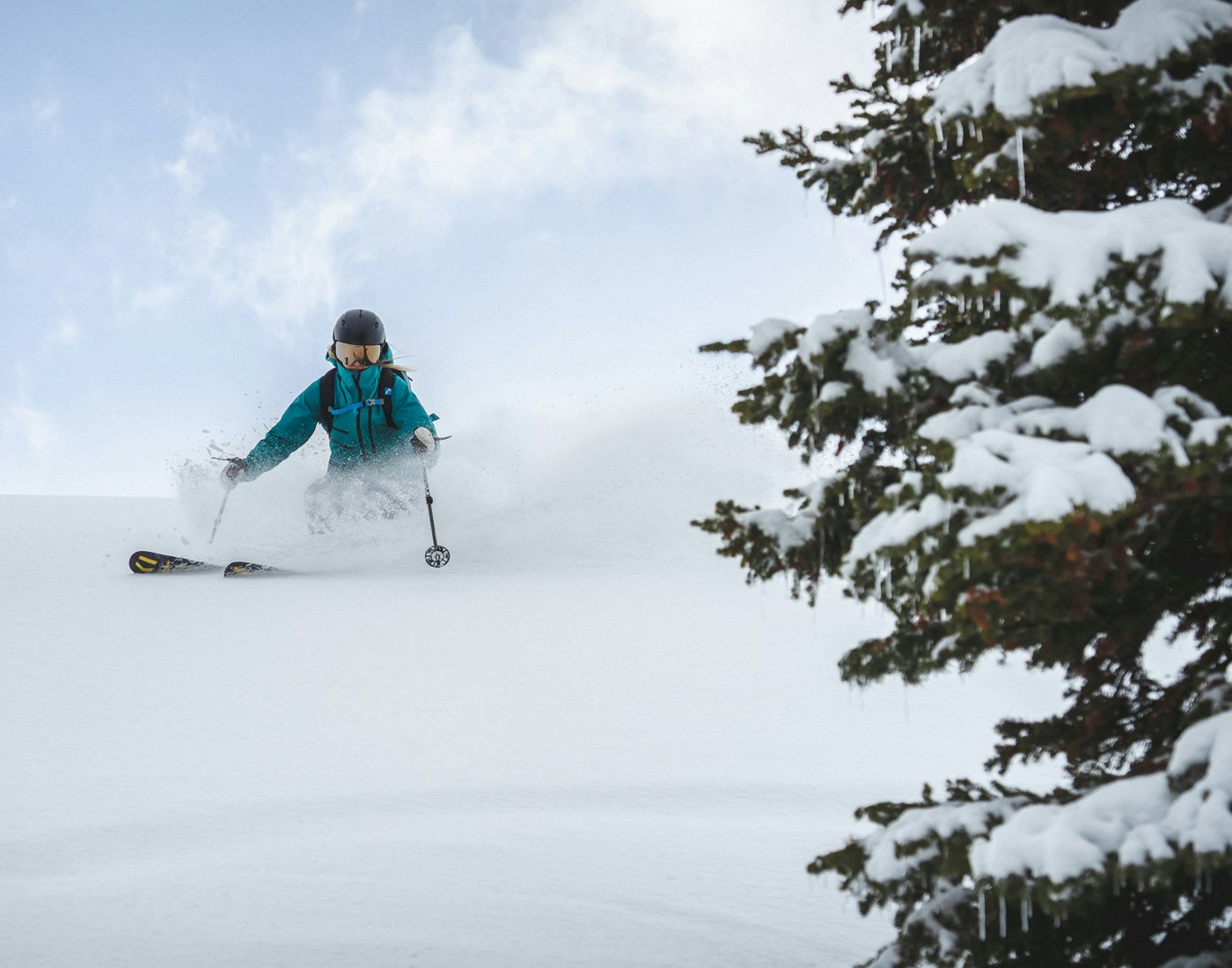
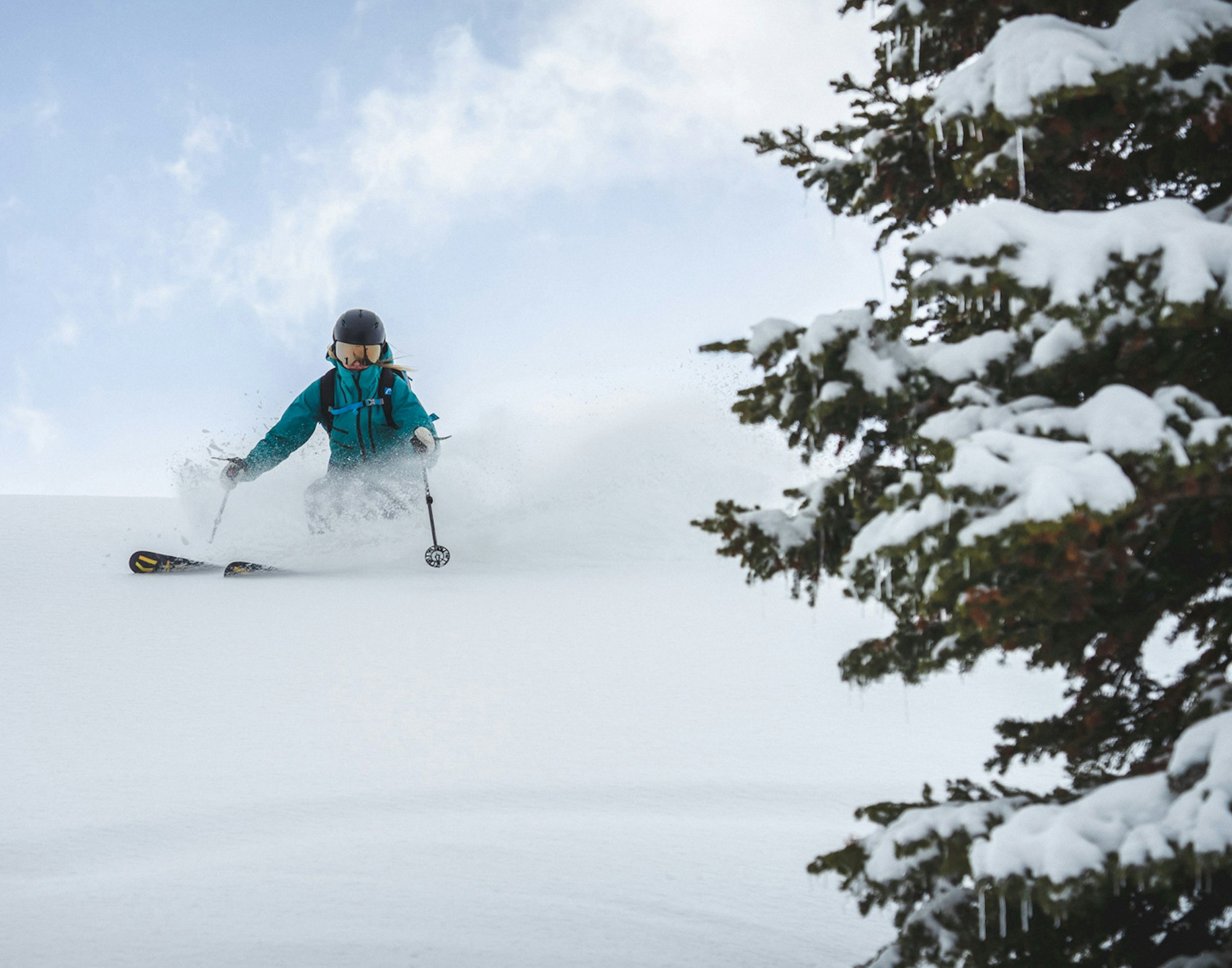
Above and below: Giro athlete Rian Zetzer takes a lap in the new Giro Envi helmet and Contour goggle.
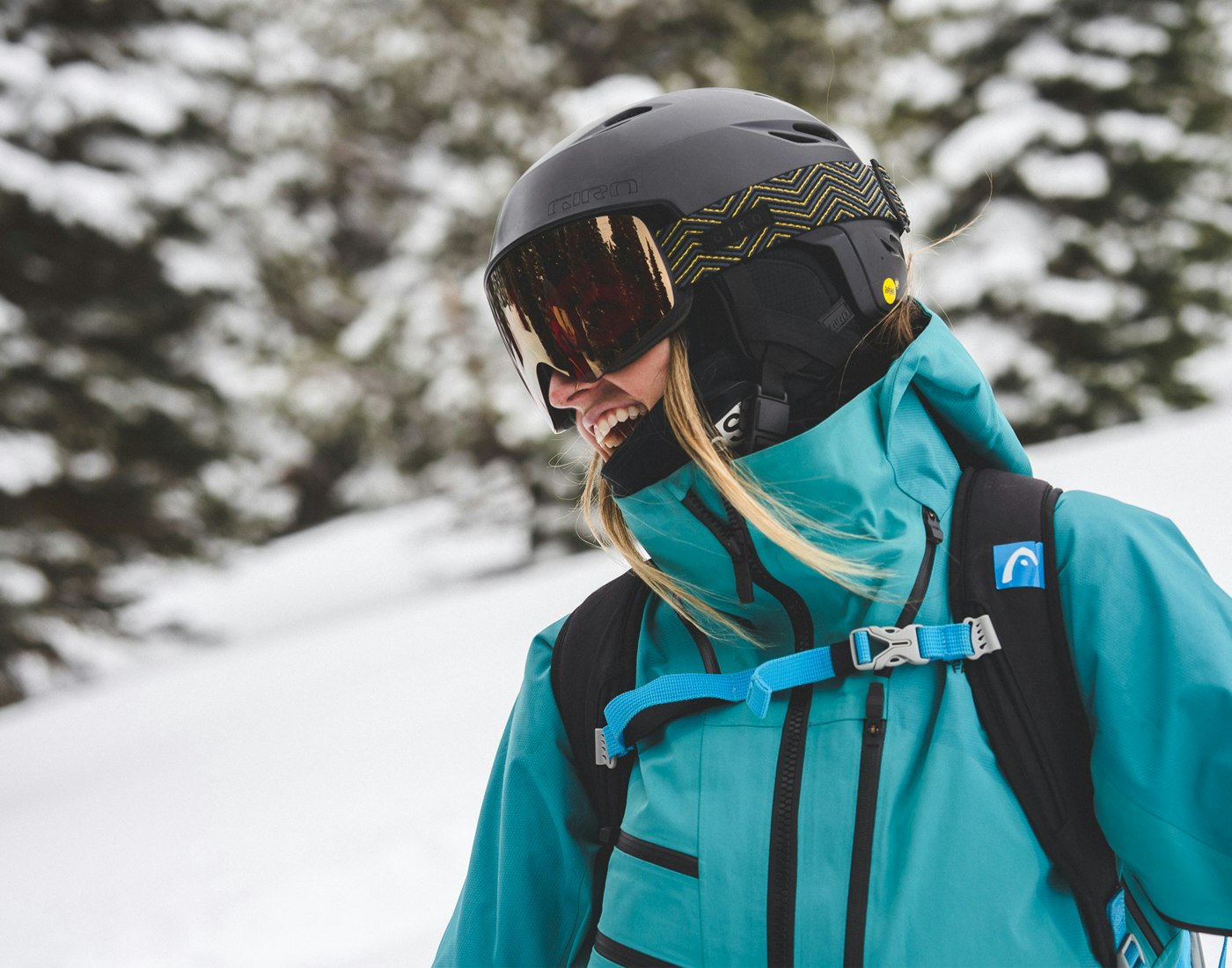

We skied until dusk and met up for a final party shred before the day was over. “We usually quit around 3:30—but this is a special occasion,” joked Wes Light, one of Whisper Ridge’s longtime guides.
That evening, dinner was marked by Pinot Nior-fueled conversations with the Giro crew about art history and the changing landscape of storytelling—bonding beyond skiing. Just after, the Whisper Ridge staff treated our group to a fireworks show, then we threw an entire grip of chopped wood onto the fire, sparks swirling, disappearing sparkles against the moonlit sky.
On our final morning at Whisper Ridge, a handful of guests, including myself, were treated to heli-accessed skiing before our early departure. Cory, the same guide who sang songs of Tennessee, sat us down for an aviation safety briefing before we learned how to load and unload The Bird correctly. Once we ascended above the yurt village and the trees below, we were swiftly shuttled to the top of a longer shot—more than 1,000 vertical feet of skiing in the Wasatch Mountains—for one final test of the new Giro Grid helmet and Contour goggle.
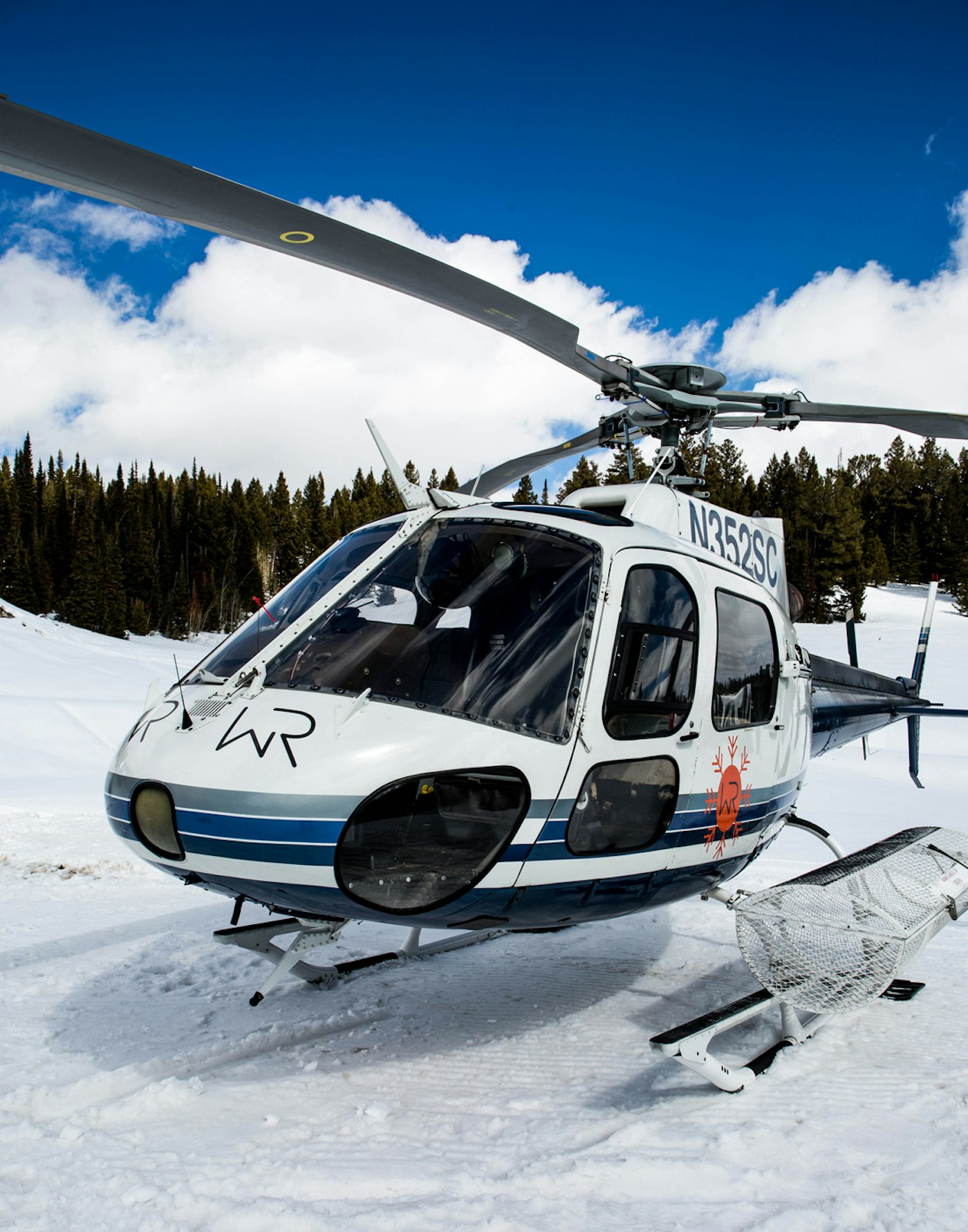
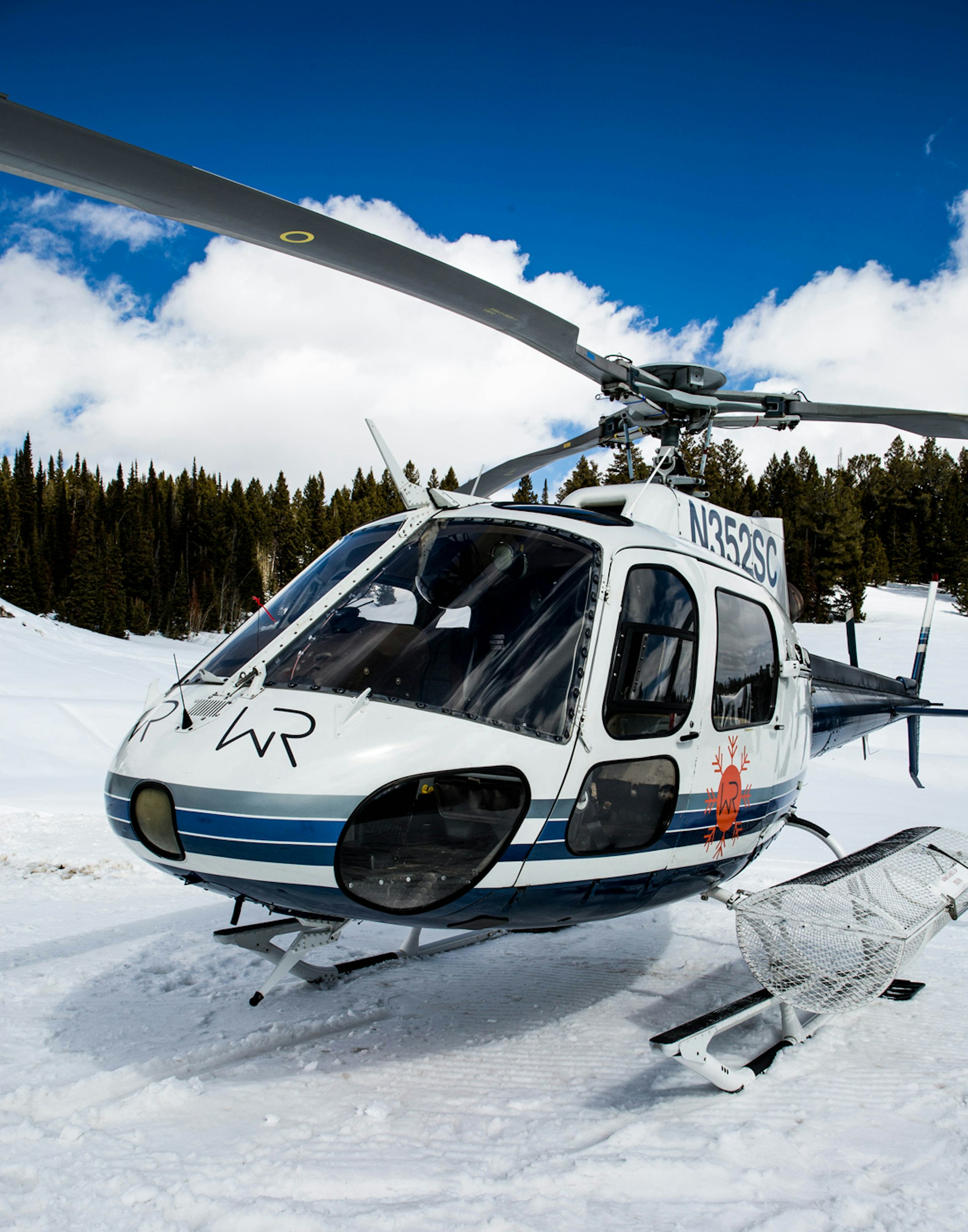
Whisper Ridge’s heli at basecamp. | PHOTO: Sam Taggart
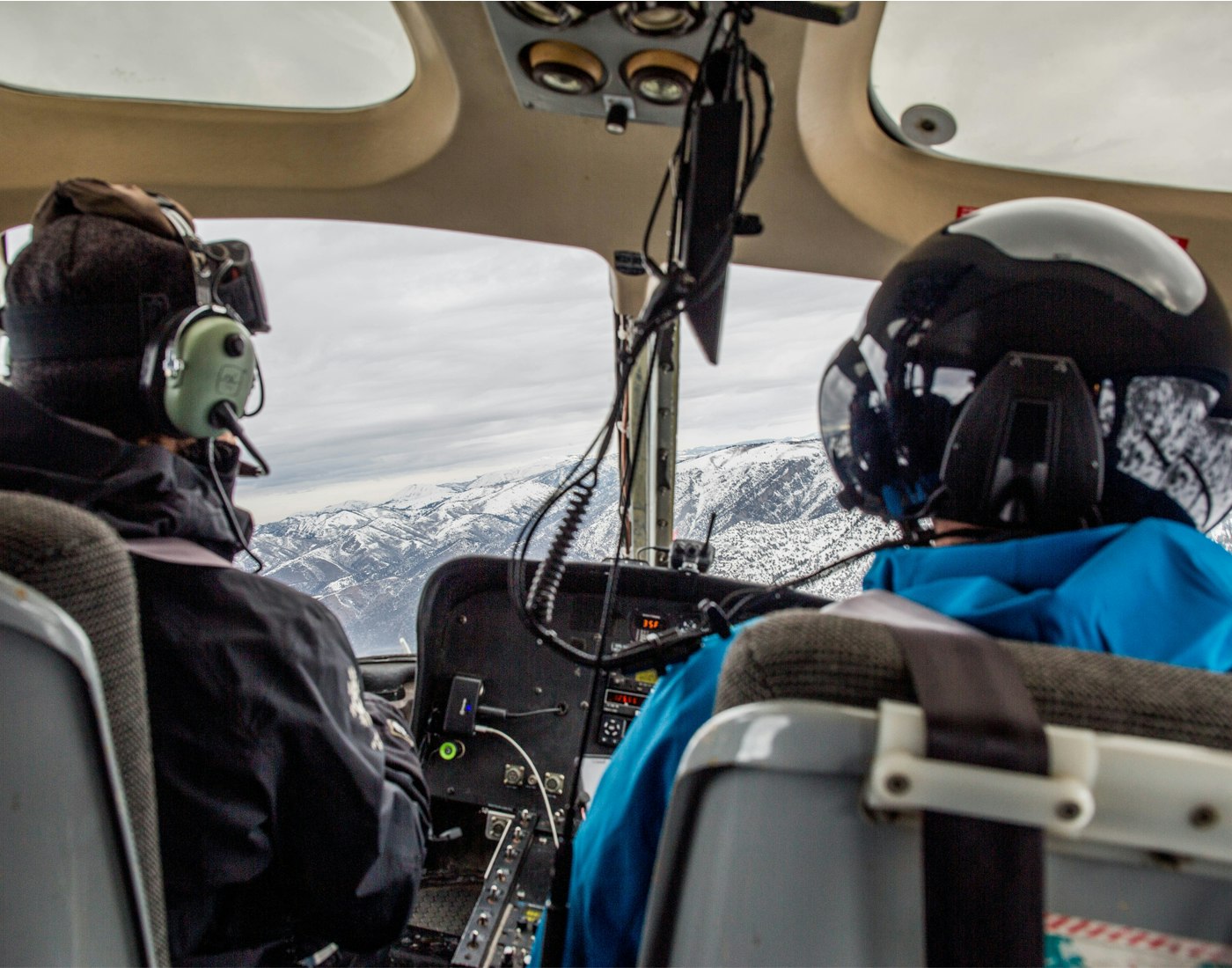
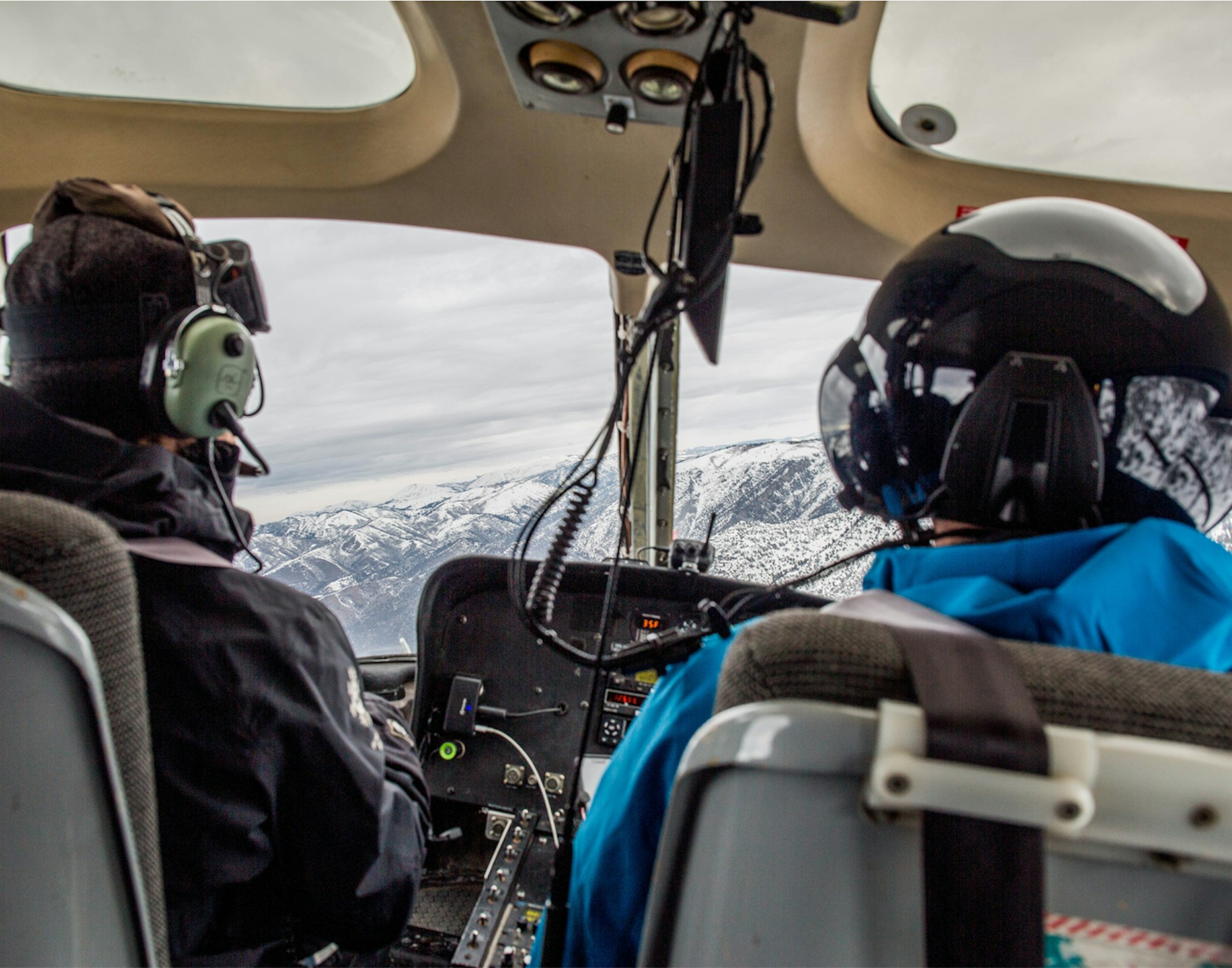
Views from the helicopter. | PHOTO: Sam Taggart
On sale in Fall 2020, the Grid helmet brings a streamlined, low-profile, amazingly lightweight product to backcountry skiers. Safety comes first, but looks are equally important; here, Giro found an ideal balance of both. Achieved by an in-mold construction with MIPS Spherical protection—an exclusive version of the tried-and-true concussion prevention technology—and a single-piece liner, the Grid is the lightest offering in the brand’s lineup at just 400 grams. Where it skimps in weight, however, it makes up for in thoughtful detailing: thin earpads connected to the heat-retaining liner promote hearing and help avoid muffled conversations; active ventilation vents dump heat faster than any of Giro’s helmets already on the market; a magnetic closure is easy to use with gloves or mittens. For those who prefer to remove the liner, whether for style or fit, Giro hasn’t left your comfort out of the equation—small areas of padding have been installed against the shell to elevate comfort, even without the moisture-wicking Polartec Power Grid Liner. The final touch is a laser-etched logo on the forehead, which, according to the brand’s designers, is just one last nod to the brand’s meticulous approach to designing gear they “actually want to wear.”
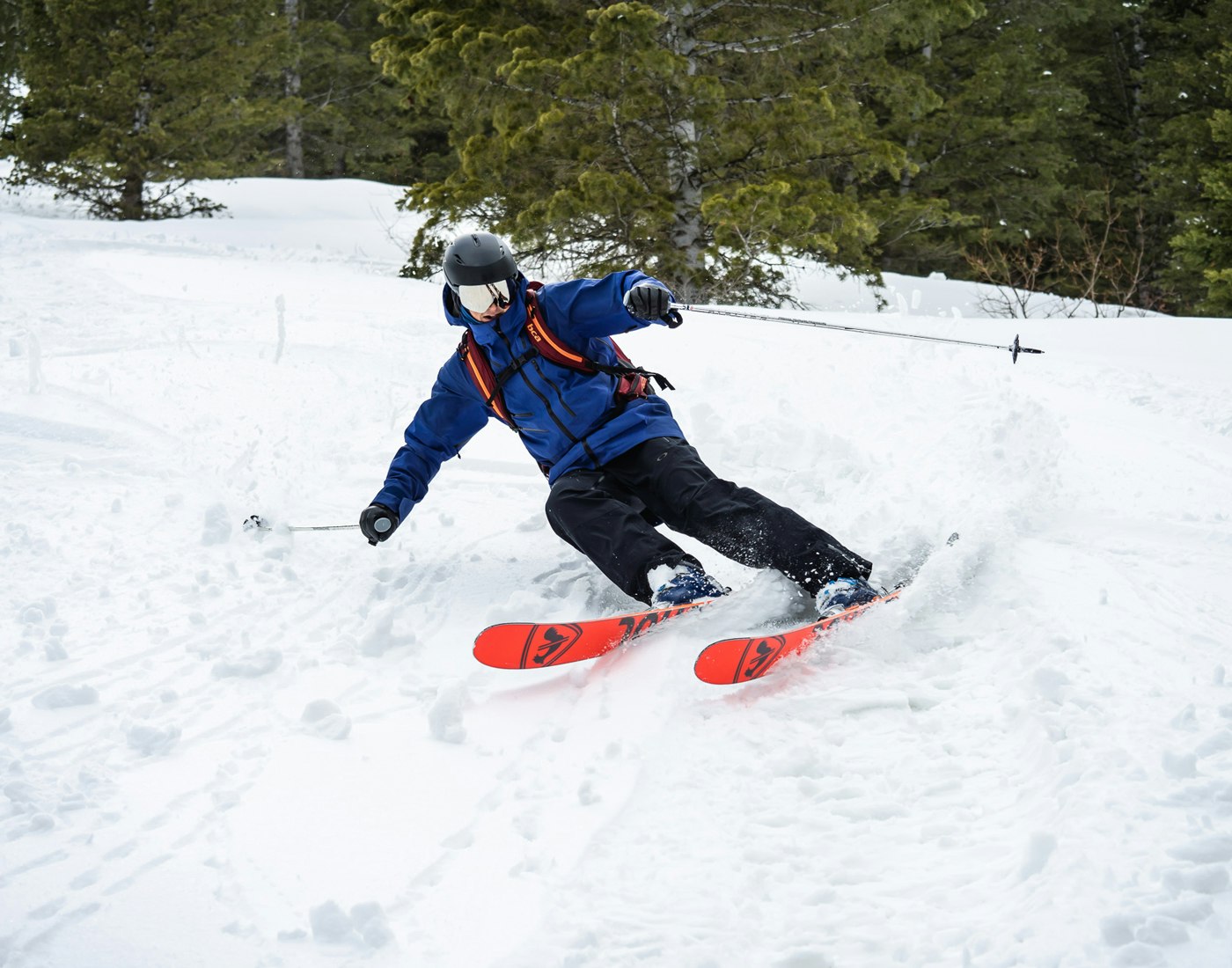
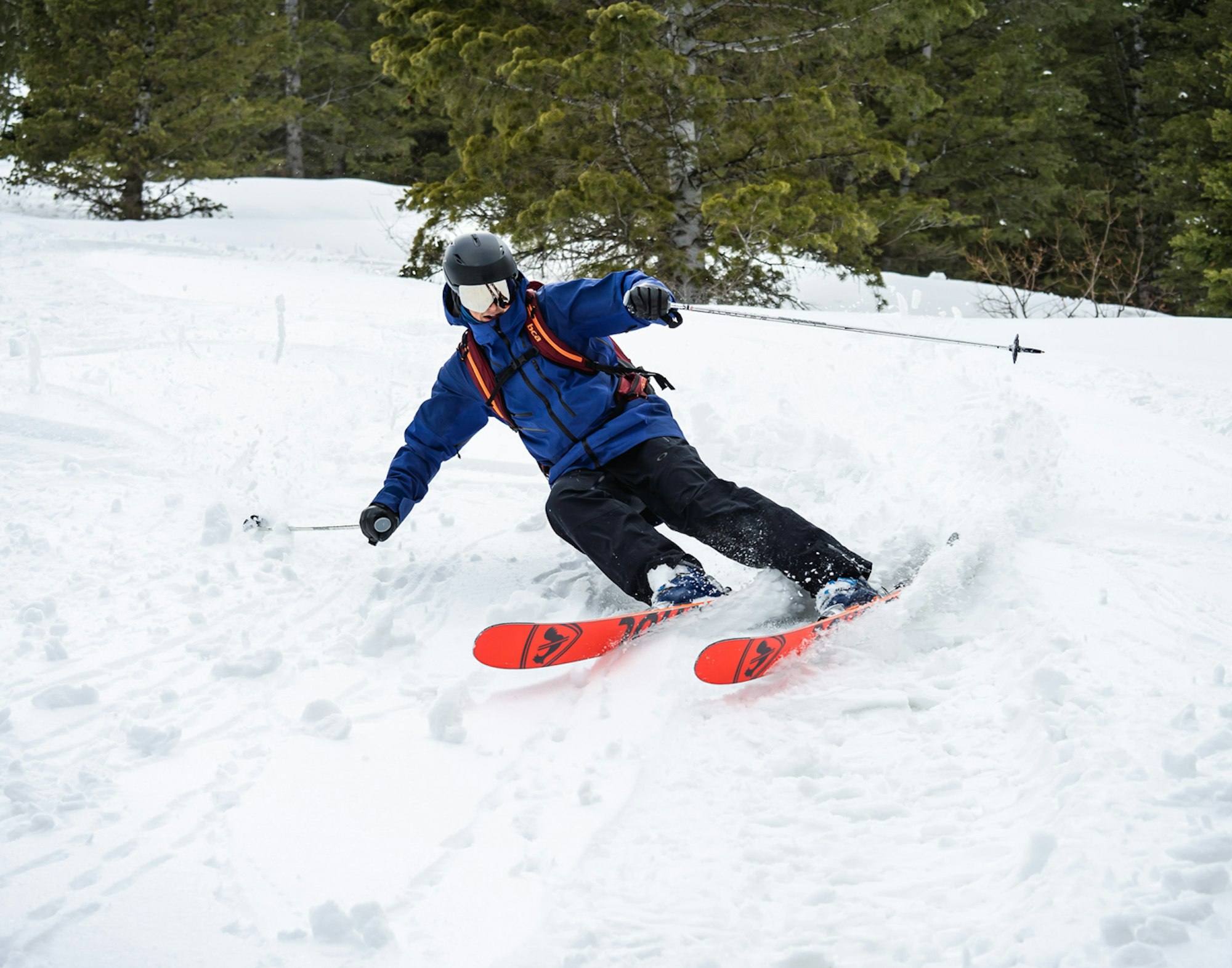
FREESKIER’s Sam Taggart works through some late afternoon fresh.
For the Contour goggle, the main focus of the project was increasing peripheral vision without losing the goggle’s streamlined appearance. Giro’s answer, the all-new Contour with its already-proven VIVID contrast-enhancing lenses, combines the styling of a cylindrical lens with the shape of a toric lens, vastly increasing peripheral vision on the hill. The ventilation pattern along the top of the goggle, which prevented fogging even amongst the changing conditions that come with loading and unloading the snowcat, also took months to decipher, one more example of Giro’s meticulous process. “Go back to that slide,” said Rob Wesson, vice president and general manager of Giro, during our first-night presentation. “I just want you all to know how many times we looked at these designs—this wasn’t a hasty decision.”
At its core, Giro Sport Design is composed of problem solvers—designing protective equipment to help athletes perform at their best, fastest and most comfortable. Founded in Santa Cruz, California, in 1985, with a surf-inspired flare, the brand prides itself on its dedication to its intentional engineering process. From initial, hand-shaped helmet and goggle prototypes to the final incorporation of eye-catching, distinctive designs, Giro’s approach to developing gear is resolute and innovative, resulting in simple-to-use yet undeniably technical performance-enhancing equipment. The Grid helmet and Contour goggle, on sale this Fall, are the next pinnacle of the brand’s rigorous, athlete-focused and problem-focused design process.

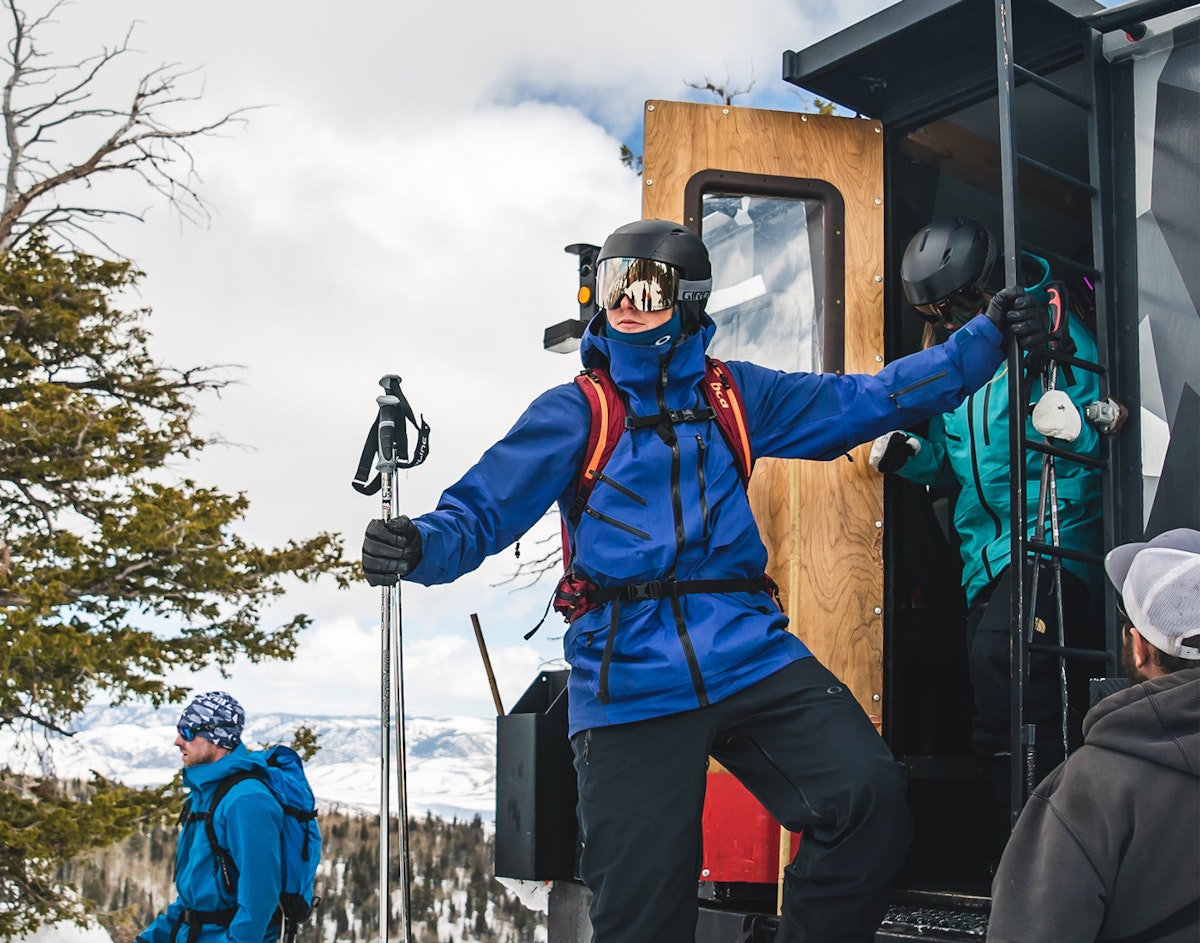
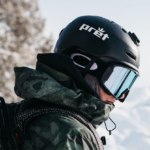

![[GIVEAWAY] Win a Head-to-Toe Ski Setup from IFSA](https://www.datocms-assets.com/163516/1765920344-ifsa.jpg?w=200&h=200&fit=crop)


![[GIVEAWAY] Win a Legendary Ski Trip with Icelantic's Road to the Rocks](https://www.datocms-assets.com/163516/1765233064-r2r26_freeskier_leaderboard1.jpg?auto=format&w=400&h=300&fit=crop&crop=faces,entropy)




![[GIVEAWAY] Win a Head-to-Toe Ski Setup from IFSA](https://www.datocms-assets.com/163516/1765920344-ifsa.jpg?auto=format&w=400&h=300&fit=crop&crop=faces,entropy)

